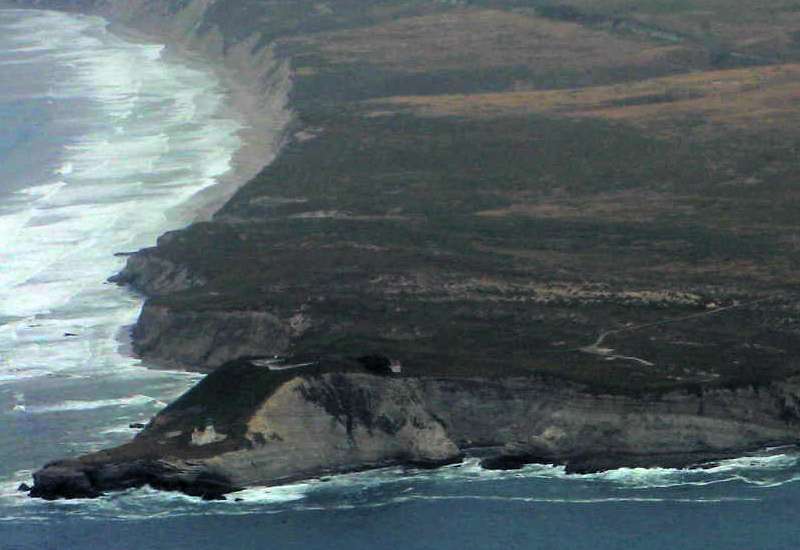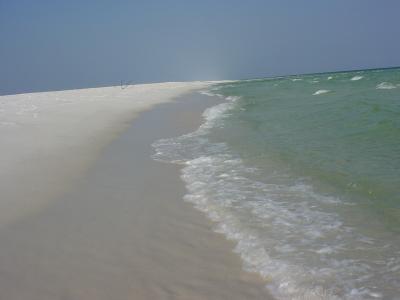Preparing for the Impacts of Sea Level Rise on the California Coast

Photo attributed to John WIley. Incorporated here under the Creative Commons Attribution 3.0 Unported license. No endorsement by licensor implied.
Posted by
Jessica HittProject Summary
The California coastline extends for more than 2,000 miles and is vulnerable to a range of natural hazards such as storms and extreme high tides that will be made worse by sea level rise. In 2003, the California Energy Commission established the California Climate Change Research Center (Center) to sponsor climate change research focusing on regional and sectoral impacts. The Pacific Institute received funding from the Center, the Ocean Protection Council, and the Metropolitan Transportation Commission to analyze the potential impacts of sea level rise on California’s population, homes, businesses, infrastructure, wetlands, and natural ecosystems. Philip Williams and Associates (now part of Environmental Science Associates; ESA PWA), in collaboration with the Pacific Institute, received funding from the Ocean Protection Council to evaluate coastal erosion along the California coast.
Background
The California coastline comprises more than 2,000 miles of open coast and bays; over 31 million people live in coastal counties. Development along the coast is extensive and includes transportation corridors; infrastructure such as oil, natural gas, and nuclear energy facilities, major ports and harbors, and water and wastewater plants; and residential communities. California’s coastline is vulnerable to a range of natural hazards such as storms, extreme high tides, and rising sea levels, all of which are likely to exacerbate flooding and erosion risks along the coast.
The California Energy Commission established the California Climate Change Research Center to document climate change research relevant to the state. Priority research areas included climate monitoring; analysis and modeling; assessment of climate impacts and adaptation strategies; and analysis of economic consequences of climate change impacts, as well as mitigation and adaptation strategies. The Center sponsored ongoing research to address these priorities, with the intent of informing the public and expanding the dissemination of climate change information. The Pacific Institute, in collaboration with ESA PWA, received funding from the Center, the Ocean Protection Council, and the Metropolitan Transportation Commission to conduct a detailed analysis of the current population, infrastructure, wetland and natural ecosystems, and properties at risk from projected sea level rise and coastal erosion. The project also explored the estimated costs of potential adaptation strategies.
Implementation
Based on the A2 and B1 scenarios of the Fourth Intergovernmental Panel on Climate Change report (i.e. medium to medium-high greenhouse gas emissions), researchers from the Scripps Institution of Oceanography projected that mean sea level along coastal California will rise from 1.0 to 1.4 meters by the year 2100. Using this information, the Pacific Institute developed inundation layers that showed the areas at risk of flooding during a 100-year event with a 1.4 meter rise in sea level. Scientists at ESA PWA created a model that related projected sea level rise to shoreline recession in order to estimate future coastal erosion rates, shore position, and the extent of shoreline erosion by 2100. The Pacific Institute then used this information to estimate initial costs, impacts, and damages to the built environment and ecosystems in coastal hazard zones.
Several goals for the study were identified:
- Map the extent of inundation from a 100-year flood event that is likely to occur as a result of sea level rise (study area spanned 1,100 miles of California’s Pacific coast and 1,000 miles of shoreline in San Francisco Bay);
- Identify areas at increased risk from erosion as a result of sea level rise (study area spanned the outer coastline from Santa Barbara to the Oregon border);
- Produce quantitative estimates of the population, infrastructure, and replacement value of property at risk from sea level rise;
- Attempt to quantify impacts on coastal ecosystems; and
- Produce an initial estimate of the cost of adaptation measures (e.g., building seawalls and levees).
Outcomes and Conclusions
Conclusions based on model scenarios and analysis of at-risk systems included:
- Large numbers of California residents (over 400,000) are at risk of a 100-year flood event given a 1.4-meter sea level rise scenario. Maps demonstrating the broad level of risk to flooding along the California coast are available online.
- A wide range of built environments (e.g., schools, hospitals, railroads, roads, power plants, residential and commercial property) are at increased risk of inundation in a 100-year flood event.
- Vast areas of wetlands and natural ecosystems are vulnerable to sea level rise; it is difficult to estimate the extent of vulnerability, however, because these systems may be able to adapt themselves based on local conditions (e.g., sediment accretion). To better estimate this, scientists also looked at potential wetland migration areas. For example, if a wetland was adjacent to a house or road, there was little potential for migration, whereas if a wetland was adjacent to agricultural land, suitable habitat was potentially available for wetland migration.
- Nearly $100 billion worth of property is at risk of flooding from a 100-year event with a 1.4-meter sea level rise (if no adaptation actions are taken). This amount does not include the cost of erosion impacts along the coastline.
- Coastal armoring is a potential adaptation strategy, although it will cost approximately $14 billion to build new or modify existing structures along 1,100 miles of coastline at risk of flooding, and fundamentally alter coastal ecosystems.
- Large sections of the Pacific coast are not vulnerable to flooding, but are at risk from accelerated erosion as a result of sea level rise; in other areas, the combined effects of flooding and erosion pose risks.
The study authors considered policy options for dealing with the impacts of sea level rise on the coasts. Recommendations that emerged from the study included:
- Integrate climate change into the design of all coastal structures;
- Include information on future flood risks due to sea level rise on federal flood insurance maps, and integrate climate change into insurance policies and strategies;
- Protect wetlands and potential migratory paths;
- Limit future development in areas that are at risk from sea level rise;
- Involve the most vulnerable populations in local planning processes when developing adaptation strategies;
- Consider phased abandonment of low- and medium-density high risk areas
- Protect coastal-dependent societal resources;
- Evaluate the social and environmental costs of building coastal protection structures when performing a cost-benefit analysis;
- Improve coastal community disaster response and recovery; and
- Consider adopting “no adverse impact” approaches when designing and permitting flood protection, beach nourishment, and other coastal protection projects.
Citation
Kershner, J. (2021). Preparing for the Impacts of Sea Level Rise on the California Coast [Case study on a project of the Pacific Institute and ESA PWA]. Version 2.0. Product of EcoAdapt's State of Adaptation Program. (Last updated September 2021)





